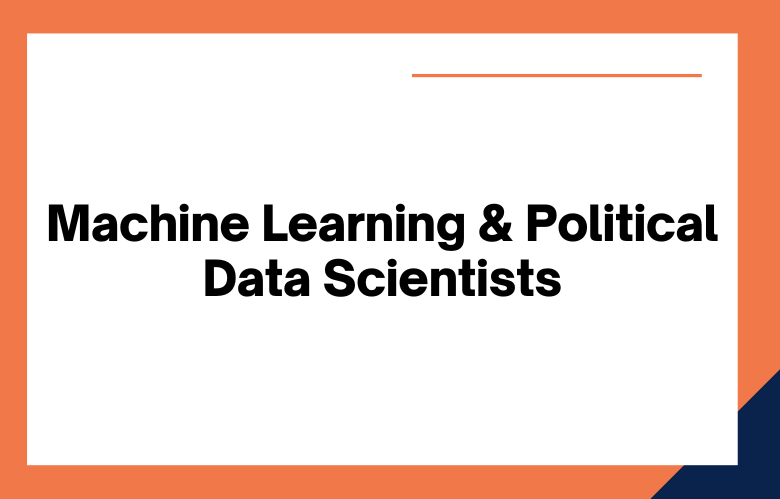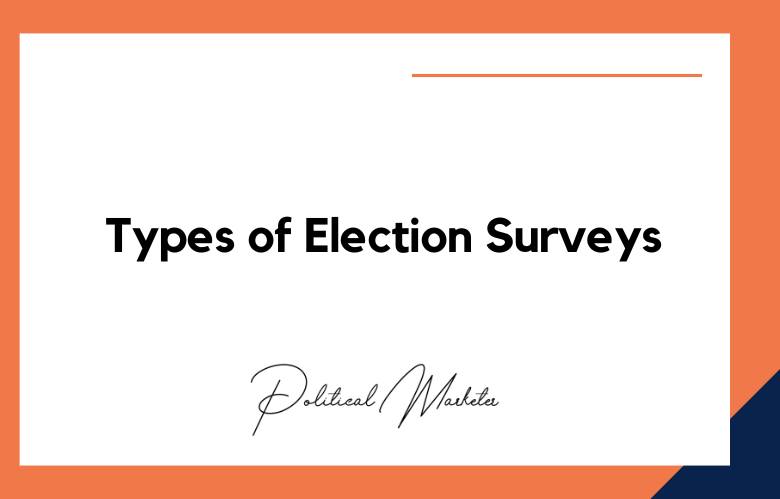As political data scientists, staying current on the most recent machine learning algorithms is essential. While there are many different ML algorithms, we will review a few of the top ones political data scientists use.
By understanding these algorithms, you can more accurately assess and analyze large datasets for your political research. So let’s get started!
The world of political data science is growing in complexity, and understanding which machine learning algorithms are most commonly used by those working in the field can be intimidating. However, knowing the suitable approaches to analyze vast amounts of information is critical for making informed decisions on anything related to politics.
We will outline the top machine learning algorithms political data scientists use—highlighting their advantages and how they’re best utilized with political datasets.
Whether you’re just beginning your journey into political data science or have been at it for a while, you’ll walk away from this article with helpful insight and understanding about what techniques should be applied depending on your dataset. Let’s dive in!
As a political data scientist, staying up-to-date on the latest technologies and algorithms can be challenging.
With so many Machine Learning algorithms available, knowing which ones will yield the best results when applied in a political context can be challenging.
To help ease this burden and get you started on your journey towards incorporating machine learning into your workflows as a political data scientist, we’re looking at some of the top machine learning algorithms that tend to produce strong results when used for political analysis.
Read on to learn more about these powerful tools and how they can help further your insights and discoveries!
An Overview of the Top Machine Learning Algorithms Used by Political Data Scientists
Logistic Regression for Politics
Logistic Regression is a supervised Machine Learning algorithm that predicts outcomes from a limited set of independent variables.
It works best when dealing with discrete outcomes like a binary (yes/no) or categorical (high/medium/low).
It is an excellent tool for predicting election results based on various demographic factors such as age, income, gender, race, and education.
Decision Trees for Politics
Decision trees are another supervised machine learning algorithm that can be used for predictive analytics in politics.
They work by breaking down complex datasets into smaller and more manageable pieces. It allows for more accessible analysis and interpretation of the data.
Decision trees are great for analyzing patterns in large data sets, such as voter behavior or polling results, to better understand how different factors may impact an election outcome.
Neural Networks for Politics
Neural networks are one of the most powerful machine learning algorithms available today.
They use multiple layers of interconnected nodes to process high-dimensional datasets and predict future events or outcomes.
Neural networks are great for analyzing complex relationships between different factors and predicting how they interact in various scenarios.
This makes them ideal for understanding voter sentiment or analyzing news articles to gain insights into public opinion on specific issues.
Neural networks are machine learning algorithms designed to mimic the human brain. They use a variety of interconnected nodes that identify patterns in data and learn from them.
Neural networks benefit political data scientists because they can quickly analyze complex datasets and predict future events or trends.
Decision Trees for Politics
Decision trees create models based on sequential decisions responding to a given problem.
In other words, decision trees create models that allow users to predict outcomes based on different variables or conditions.
This makes decision trees ideal for political data scientists who need to visualize relationships between variables such as voter demographics and election outcomes.
Support Vector Machines for Politics
Support vector machines (SVMs) are one of the most commonly used classification algorithms in machine learning.
SVMs attempt to find an optimal hyperplane—or line—in high-dimensional space that will separate two groups of points (i.e., positive and negative classes).
Political data scientists use SVMs to classify voters into different groups based on their preferences or behaviors, allowing for more accurate predictions about how people will vote in elections.
Classification Algorithms for Politics
Classification algorithms are essential tools in any political data scientist’s toolkit. Classification algorithms help you classify data points into different classes based on their characteristics.
These algorithms classify voters according to their political affiliations or voting habits.
Standard classification algorithms include Support Vector Machines, Naive Bayes, Decision Trees, and Random Forests.
Regression Algorithms for Politics
Regression algorithms are used to predict future outcomes based on historical data.
They can be used to predict voter behavior or electoral outcomes from past election results and demographic information about voters.
Standard regression algorithms include linear, Logistic, and multiple linear Regression.
Many researchers have developed customized models for predicting electoral outcomes based on voter demographics and other factors.
Clustering Algorithms for Politics
Clustering algorithms are another class of machine learning algorithms commonly used in political science and other fields.
Clustering algorithms group similar items in a dataset based on their characteristics or features.
For example, clustering can group voters with similar beliefs or voting patterns into distinct clusters that can be analyzed separately.
Popular clustering algorithms include K-means Clustering and Hierarchical Clustering.
Advantages of Machine Learning Algorithms Used by Political Data Scientists
- Machine learning algorithms can help political data scientists to make more accurate predictions.
- Machine learning algorithms can help political data scientists to identify trends that would otherwise be difficult to spot.
- Machine learning algorithms can help political data scientists save time by automating tasks that would otherwise be time-consuming.
- Machine learning algorithms can help political data scientists better use data.
- Machine learning algorithms can help political data scientists improve their models’ accuracy.
- Machine learning algorithms can help political data scientists reduce model bias.
- Machine learning algorithms can help political data scientists improve their models’ transparency.
- Machine learning algorithms can help political data scientists to make more reliable predictions.
- Machine learning algorithms can help political data scientists reduce prediction errors.
- Machine learning can help political data scientists to make more accurate predictions about election outcomes.
- Machine learning can help political data scientists better understand voters’ preferences.
- Machine learning can help political data scientists identify voting behavior trends.
- Machine learning can help political data scientists to develop targeted campaign strategies.
- Machine learning can help political data scientists to analyze vast amounts of data more efficiently.
- Machine learning can help political data scientists to improve their understanding of complex phenomena.
- Machine learning can help political data scientists to detect patterns that would otherwise be undetectable.
- Machine learning can help political data scientists better use limited resources.
- Machine learning can help political data scientists reduce the error margin in their predictions.
Conclusion
Political data scientists can use several practical machine learning algorithms to gain valuable insights from large datasets.
Logistic Regression can be used to predict election outcomes based on demographic information. At the same time, decision trees and neural networks provide more nuanced interpretations of voter sentiment or public opinion on specific topics.
Understanding these algorithms allows you to assess and analyze large datasets more accurately for your political research projects and campaigns.
Call: +91 9848321284
Email: [email protected]










